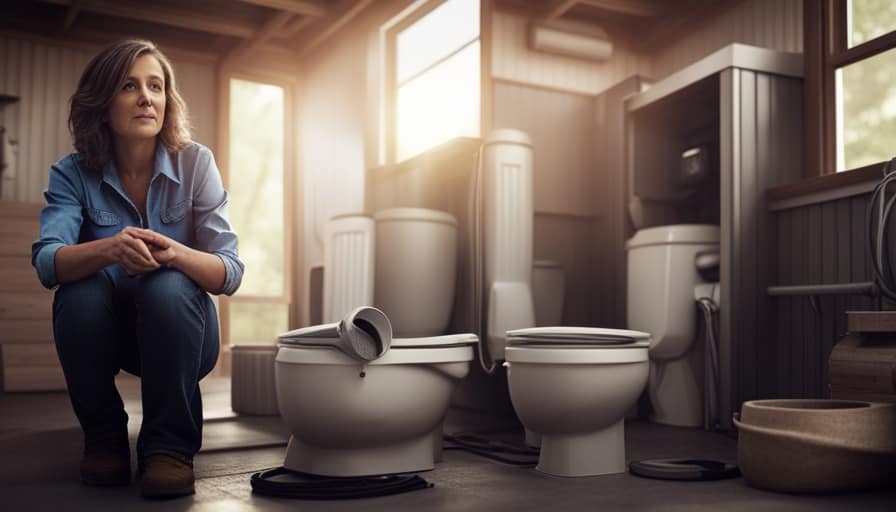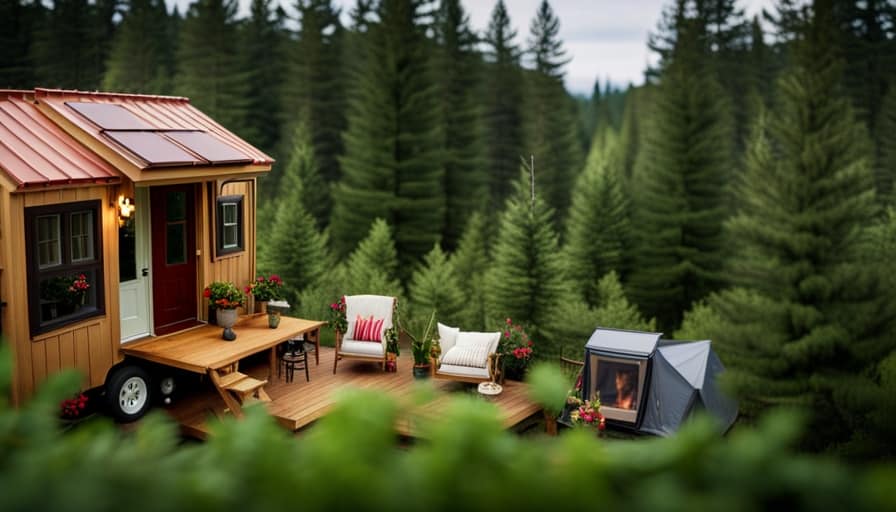Are you prepared to discover the mysteries of efficient tiny house design? We have everything you need.
In this article, we’ll delve into the ten key elements that make a tiny house truly livable. From efficient use of space to clever storage solutions, we’ll explore every nook and cranny to help you maximize your living area.
With our expert tips and tricks, you’ll be able to create a tiny house that’s not only practical, but also stylish and comfortable.
Let’s dive in and transform your tiny house dreams into a reality.
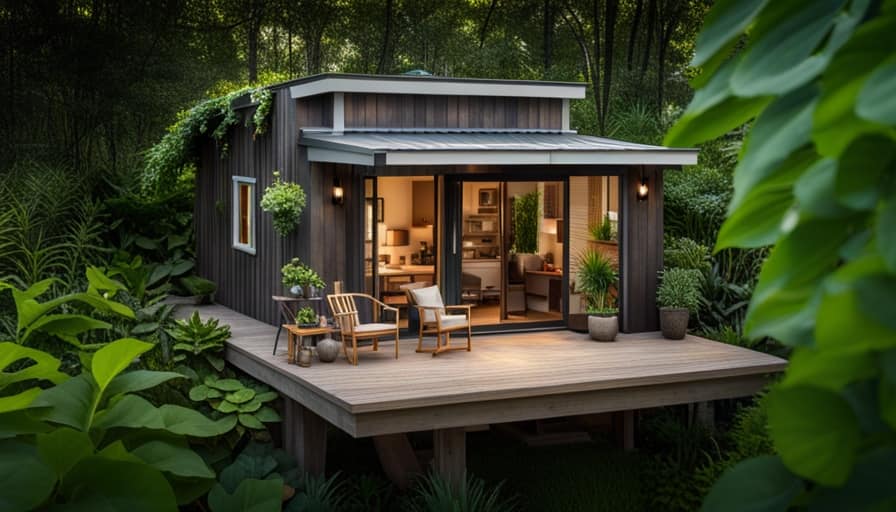
Key Takeaways
- Efficient use of space is crucial in a functional tiny house design, with clever storage solutions and multi-purpose furniture being essential.
- Optimizing natural light and having an effective ventilation system are important for creating a comfortable and healthy living environment in a tiny house.
- The design elements of the kitchen and bathroom should prioritize functionality and efficiency, while integrating smart technology can enhance the overall functionality of the tiny house.
- Sustainable energy solutions, outdoor living spaces, and maximizing small yards are key considerations for creating a sustainable and enjoyable living experience in a tiny house.
Efficient Use of Space
We can maximize the utilization of space in our tiny house design by incorporating smart storage solutions.
Efficient organization and innovative space-saving techniques are crucial in creating a functional and comfortable living environment.
One way to achieve efficient organization is by utilizing multi-functional furniture that serves multiple purposes, such as a sofa that can also be used as a storage unit.
Another innovative space-saving idea is to utilize vertical space by installing floating shelves or wall-mounted storage units.
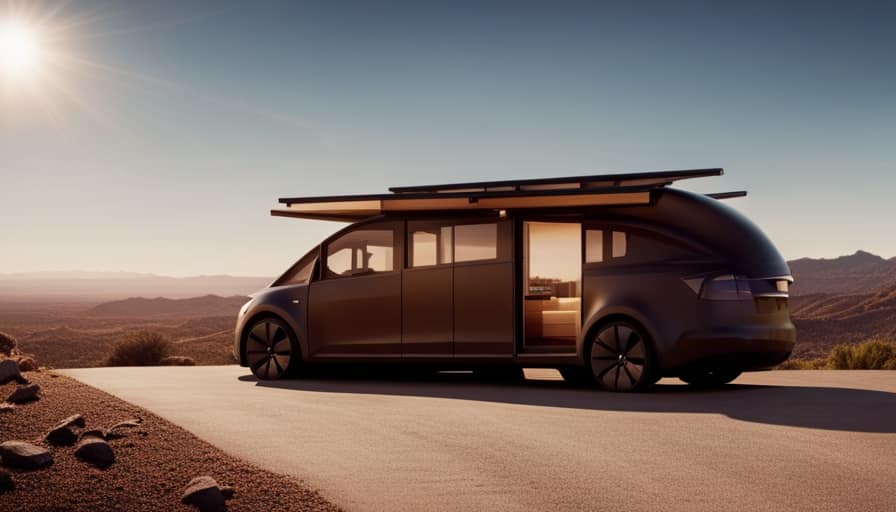
Additionally, incorporating built-in storage solutions, such as hidden compartments or under-the-stairs storage, can help optimize space utilization.
Clever Storage Solutions
To optimize storage in our tiny house design, we can use clever solutions such as utilizing vertical space and incorporating hidden compartments. By thinking creatively, we can maximize the functionality of our limited square footage. One way to achieve this is through the use of hidden compartments, which allow for discreet storage without sacrificing aesthetics. Additionally, creative shelving solutions can help us make the most of every nook and cranny. To illustrate these ideas, consider the following table:
| Solution | Description | Benefits |
|---|---|---|
| Vertical shelving | Utilize wall space for storage | Saves floor space |
| Under-bed storage | Utilize empty space under the bed | Maximize storage in small areas |
| Hidden wall compartments | Concealed storage within walls | Provides a sleek and clutter-free look |
Multi-purpose Furniture
When it comes to designing a functional tiny house, one of the key elements to consider is multi-purpose furniture. This type of furniture offers space-saving solutions by serving multiple functions.
From sofas that can transform into beds to coffee tables with hidden storage compartments, versatile furniture options allow you to maximize functionality without sacrificing style.

Space-Saving Solutions
Our tiny house design incorporates several space-saving solutions, such as using multi-purpose furniture. We understand the importance of maximizing every square inch in a small living space, and that’s why we’ve incorporated innovative ideas to provide functionality without compromising on style.
Here are some space-saving solutions we’ve implemented in our tiny house design:
-
Foldable furniture: Our design includes foldable tables, chairs, and beds that can be easily stowed away when not in use, creating more floor space and allowing for flexible room configurations.
-
Hidden storage: We’ve integrated clever storage solutions throughout the house, utilizing hidden compartments under stairs, within walls, and even under the floor. These hidden storage spaces provide ample room to store belongings, keeping the living areas clutter-free and organized.

Versatile Furniture Options
The tiny house design incorporates versatile furniture options and multi-purpose furniture. When space is limited, it’s crucial to maximize functionality without sacrificing comfort.
Transformable seating is a key element in achieving this goal. By day, a sofa can provide a cozy spot to relax or entertain guests. However, with a simple adjustment, it can be transformed into a comfortable bed for a good night’s sleep.
Additionally, convertible storage is essential in tiny house living. Furniture pieces with hidden compartments or built-in storage solutions allow for efficient organization and help keep clutter at bay.
These versatile furniture options not only save space but also enhance the overall functionality of the tiny house design.
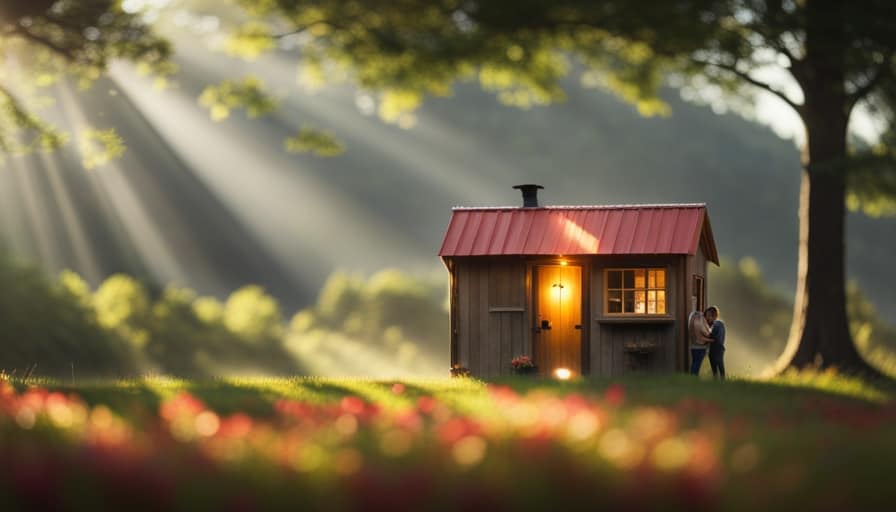
Now, let’s explore how we can further maximize functionality with design…
Maximizing Functionality With Design
As we continue our exploration of maximizing functionality with design, let’s delve into the versatility and practicality of multi-purpose furniture.
When it comes to tiny house living, every square inch matters, and maximizing efficiency is key. Multi-purpose furniture offers a solution by combining multiple functionalities into a single piece, allowing you to make the most of your limited space.
Here are some examples of how multi-purpose furniture can enhance your tiny house design:
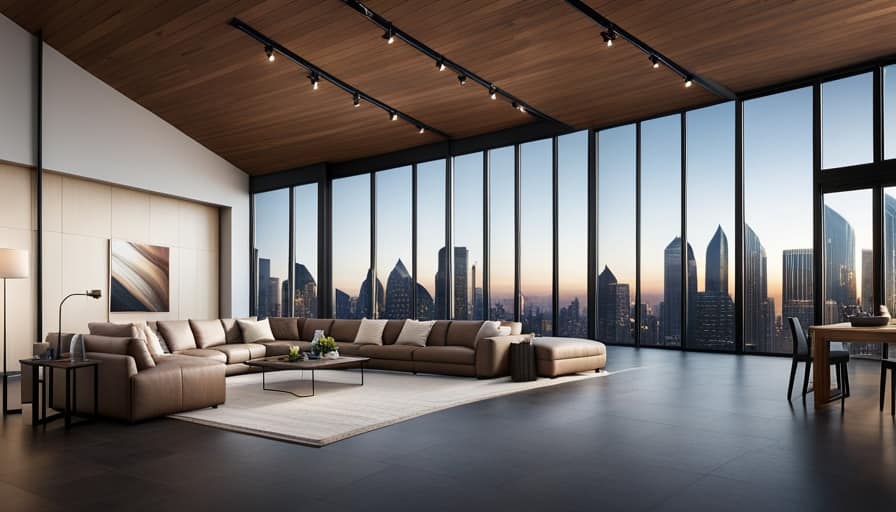
- Convertible sofa beds that serve as seating during the day and transform into a comfortable sleeping space at night.
- Folding dining tables that can be expanded when needed and folded away when not in use.
By incorporating these ergonomic design elements into your tiny house, you can create a functional and comfortable living space.
Now, let’s move on to the next topic of optimizing natural light.
Optimizing Natural Light
We can maximize natural light in our tiny house by strategically placing windows and using reflective surfaces. Natural light optimization is crucial for creating a bright and welcoming living space.
When designing our tiny house, we should consider the orientation of the windows to capture the most sunlight throughout the day. Placing windows on the south-facing side will allow for maximum exposure to sunlight, especially during the winter months.
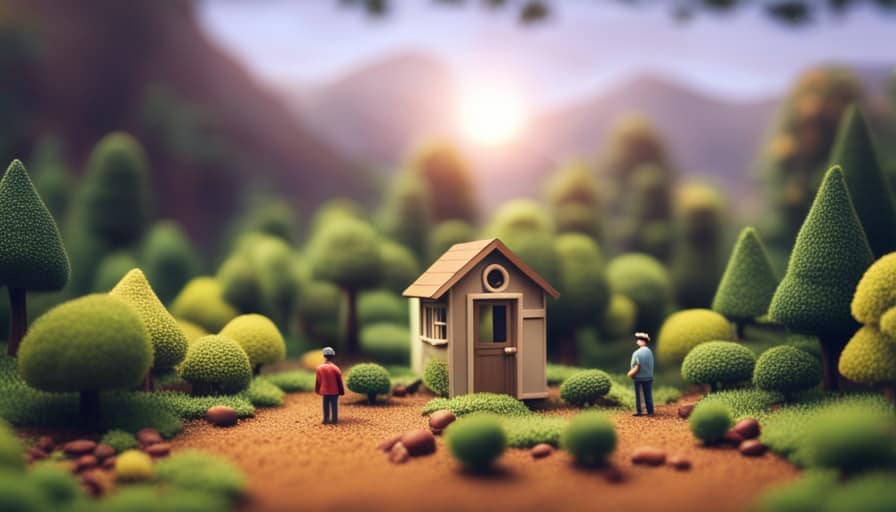
Additionally, incorporating reflective surfaces such as mirrors or light-colored walls can help bounce natural light around the space, making it feel larger and more open.
It’s important to note that while natural light is ideal, we should also consider energy-efficient lighting options for the evenings or on cloudy days. LED lights are a great choice as they’re energy-saving and long-lasting, ensuring we can enjoy a well-lit space while minimizing our environmental impact.
Effective Ventilation System
But, in order to ensure a comfortable and healthy living environment, we must also prioritize an effective ventilation system. Efficient air circulation and temperature control are key components of a well-designed tiny house.
Here are some reasons why a robust ventilation system is crucial:
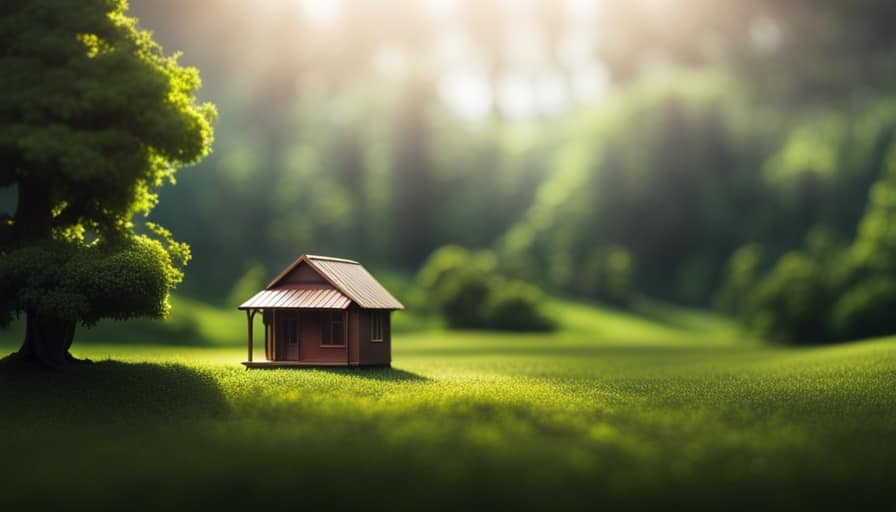
-
Improved air quality: A proper ventilation system helps remove stale air, odors, and pollutants, ensuring a constant supply of fresh air. This is especially important in a small space where air can quickly become stagnant.
-
Prevention of condensation: Adequate ventilation helps control humidity levels, preventing condensation on windows and walls. This reduces the risk of mold and mildew growth, which can lead to respiratory issues.
-
Regulation of temperature: A well-ventilated tiny house can help maintain a comfortable indoor temperature by allowing hot air to escape during the summer and retaining warmth during the winter.
Functional Kitchen Design
The functional kitchen design is an essential aspect of creating a practical and efficient tiny house. In order to maximize space and functionality, it’s important to incorporate efficient appliances and a minimalist design.
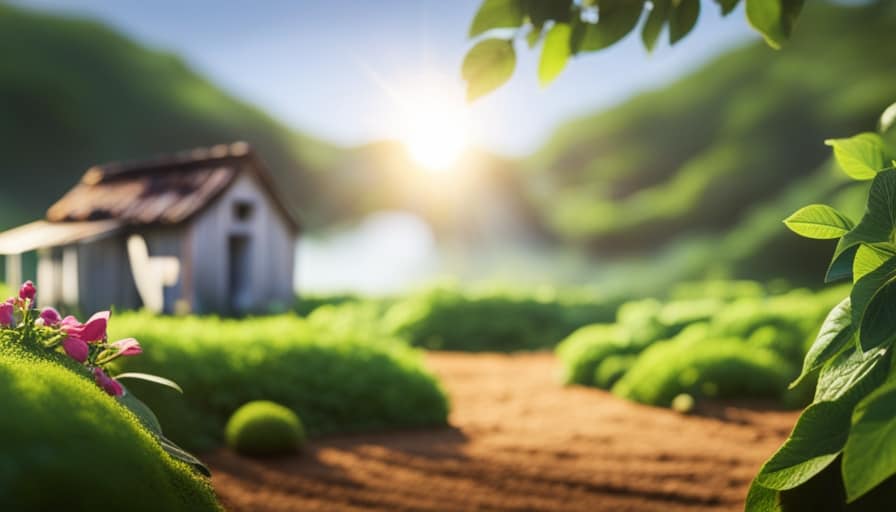
When choosing appliances, opt for compact and energy-efficient models that can perform multiple functions. This will help save space and reduce energy consumption.
Additionally, a minimalist design approach can create a clean and organized kitchen area. Utilize clever storage solutions, such as built-in cabinets and pull-out drawers, to maximize storage space. Consider using multipurpose furniture, like a kitchen island with built-in storage, to serve multiple functions.
Well-designed Bathroom Layout
With careful planning and attention to detail, a well-designed bathroom layout can maximize space and functionality in a tiny house. When it comes to creating an efficient plumbing system and optimizing a small bathroom design, there are a few key elements to consider:
- Space-saving fixtures: Opt for compact toilets, corner sinks, and wall-mounted faucets to save valuable space in the bathroom.
- Smart storage solutions: Utilize vertical space by installing shelves or cabinets above the toilet or sink. Consider using recessed shelving or built-in niches to maximize storage while keeping the bathroom visually uncluttered.
- Multi-functional design: Incorporate dual-purpose elements like a mirror cabinet that can also serve as additional storage or a folding shower seat that can be tucked away when not in use.
- Creative layout: Experiment with unconventional layouts, such as placing the shower at the end of the bathroom or utilizing sliding doors to save space.
- Natural light and ventilation: Install windows or skylights to bring in natural light and fresh air, creating a sense of openness and preventing moisture buildup.
Smart Technology Integration
We can enhance the functionality and convenience of a tiny house by integrating smart technology into its design.
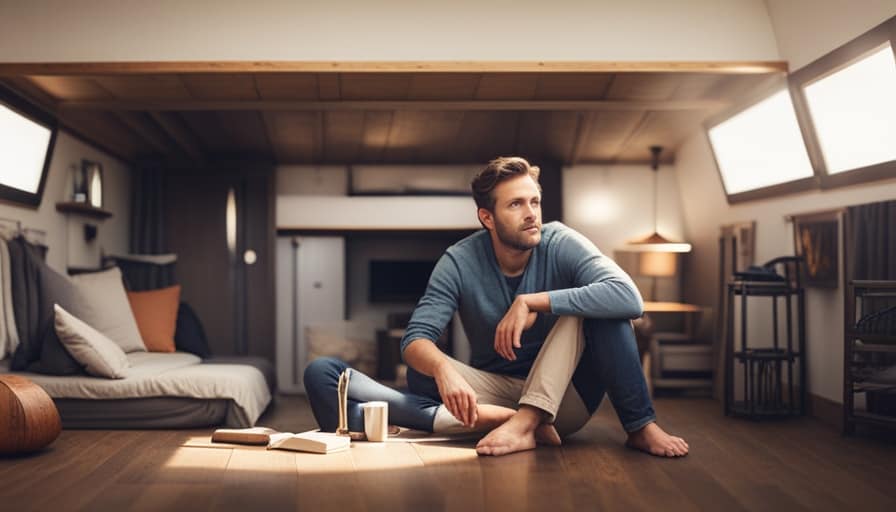
Smart home automation allows us to control various aspects of the house using our smartphones or voice commands. By connecting devices such as lights, thermostats, and security systems to a central hub, we can easily manage and monitor them remotely. This level of automation not only improves the efficiency of the house but also adds a layer of convenience to our daily lives.
In addition to smart home automation, energy efficient appliances play a crucial role in a tiny house. By using appliances that are designed to consume less energy, we can reduce our environmental footprint and save on utility bills.
Transitioning into the subsequent section about sustainable energy solutions, we can explore how these technologies can further optimize the energy usage in a tiny house.
Sustainable Energy Solutions
Our goal is to implement renewable energy sources in order to create a sustainable and eco-friendly energy solution for our tiny house. By incorporating solar power, we can harness the natural energy from the sun to power our home. This not only reduces our reliance on non-renewable resources but also helps to lower our carbon footprint.
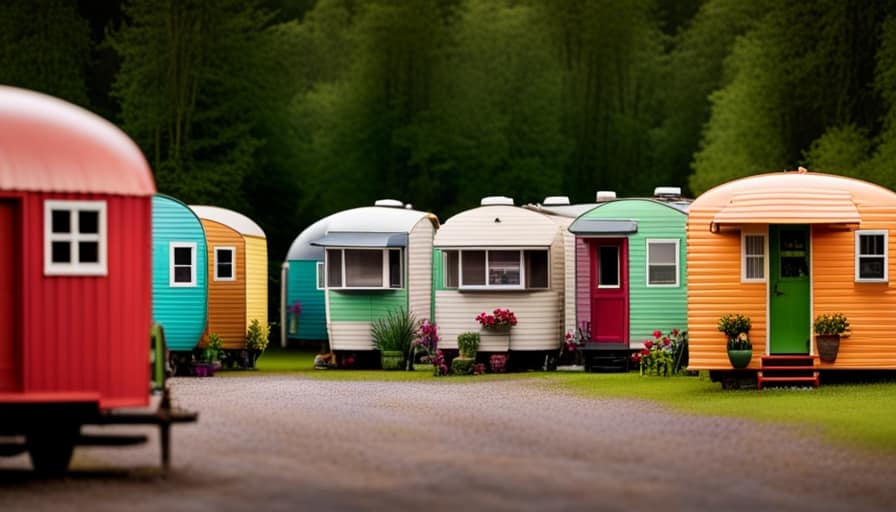
In addition, we plan to use energy efficient appliances throughout our tiny house. These appliances are designed to consume less electricity, which not only saves energy but also reduces our utility bills.
With the combination of solar power and energy efficient appliances, we can create a self-sufficient and environmentally friendly energy solution for our tiny house, making it a truly sustainable living space.
Outdoor Living Spaces
When designing outdoor living spaces for a tiny house, we must focus on maximizing the small yard. This can be achieved by using vertical gardening techniques, such as trellises and hanging planters, to make the most of limited space.
Another crucial element is versatile outdoor furniture that can serve multiple purposes, such as folding tables and chairs that can be easily stored when not in use.
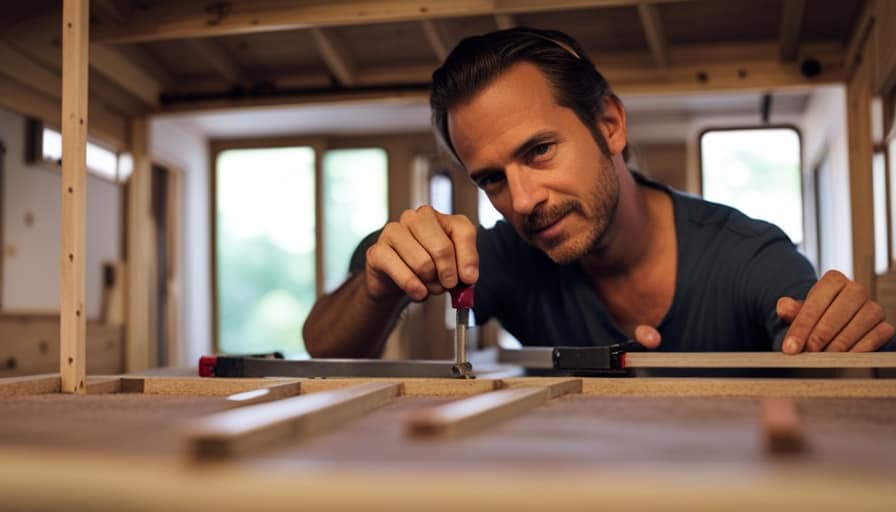
Lastly, an integrated cooking area with a compact grill or outdoor stove allows for convenient outdoor dining experiences without taking up too much space.
Maximize Small Yard
How can we make the most of our small yard to create functional outdoor living spaces in our tiny house design? With careful planning and creative thinking, there are several ways to maximize the potential of our limited outdoor space.
Here are some ideas to consider:
-
Create a small garden: Utilize vertical gardening techniques, hanging planters, and raised beds to make the most of the available space. Choose plants that are suitable for small gardens and require minimal maintenance.
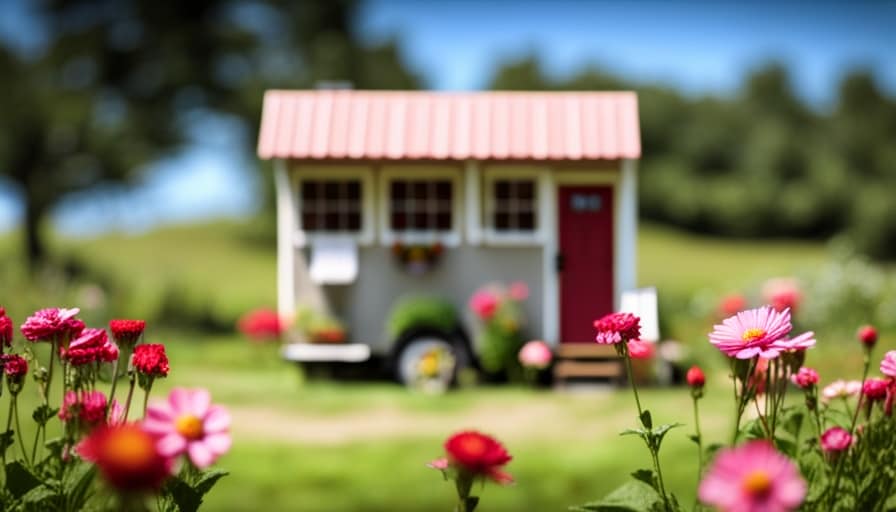
-
Design for outdoor activities: Incorporate features like a compact seating area, a small fire pit, or a mini outdoor kitchen to create a functional space for relaxation and entertaining. Consider using multipurpose furniture that can be easily folded or stacked to save space when not in use.
Versatile Outdoor Furniture
One option to consider for creating functional outdoor living spaces in our tiny house design is to incorporate versatile outdoor furniture, such as folding chairs and stackable tables. These types of furniture can easily be moved and rearranged to accommodate different activities and maximize the use of limited outdoor space.
Folding chairs are compact and can be stored away when not in use, while stackable tables can be stacked together to save space. Additionally, outdoor seating can be enhanced by using cushions and pillows that add comfort and style.
To create a cohesive and inviting outdoor living area, it’s important to also consider garden landscaping. Incorporating plants, flowers, and other natural elements can create a serene and relaxing environment that complements the versatile outdoor furniture.
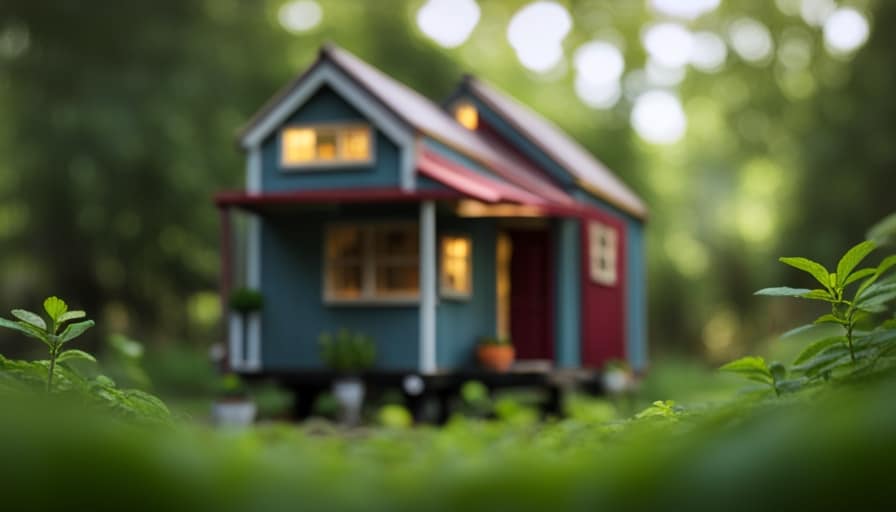
Integrated Cooking Area
We can create a functional outdoor living space in our tiny house design by incorporating an integrated cooking area. This allows us to enjoy the benefits of cooking and dining al fresco, while making the most of our limited space.
To achieve this, we should consider the following:
-
Efficient layout: Design the cooking area with an ergonomic kitchen layout that maximizes functionality and minimizes wasted space. Consider the placement of appliances, work surfaces, and storage areas to create an efficient workflow.
-
Multi-purpose features: Incorporate multi-purpose features such as foldable countertops or convertible tables that can be used for food preparation, dining, and entertaining. This helps optimize the use of space and ensures versatility in our outdoor cooking area.

Frequently Asked Questions
What Are Some Tips for Maximizing Storage in a Tiny House?
To maximize storage in a tiny house, we recommend incorporating space-saving furniture and clever storage solutions. These include built-in shelves, hidden compartments, and multi-functional furniture pieces that serve multiple purposes while taking up minimal space.
How Can I Make the Most of Natural Light in a Small Space?
To maximize natural light in a small space, we strategically placed large windows on the south-facing wall of our tiny house. This design choice not only brightens the interior but also reduces the need for artificial lighting during the day.
What Are Some Innovative Ways to Incorporate Multi-Purpose Furniture Into a Tiny House Design?
Incorporating innovative furniture designs and space-saving solutions is essential in a well-designed tiny house. By maximizing functionality through multi-purpose furniture, we can optimize the limited space available and create a comfortable living environment.
Can You Provide Examples of Sustainable Energy Solutions for a Tiny House?
Off grid power solutions and sustainable water systems are crucial for a functional tiny house. We can explore solar panels, wind turbines, and rainwater harvesting as some examples. These sustainable energy solutions ensure self-sufficiency and minimal impact on the environment.
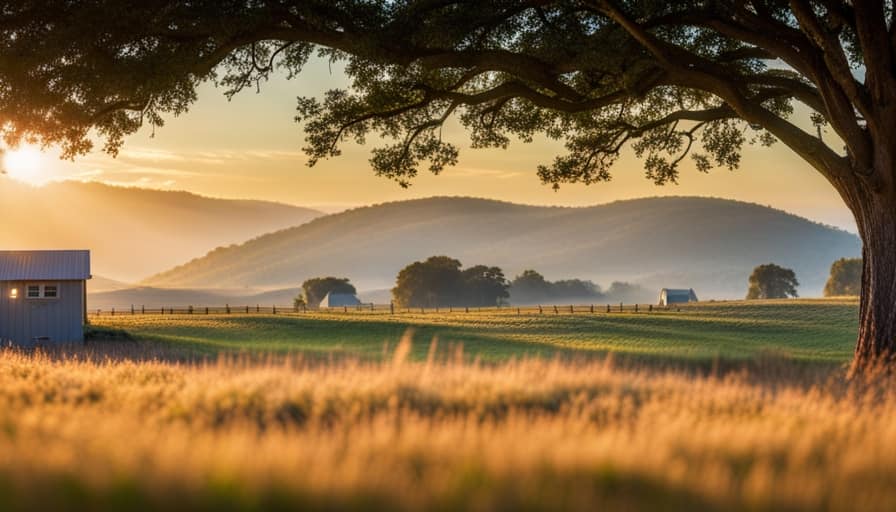
What Are Some Creative Ways to Incorporate Outdoor Living Spaces Into a Small Footprint?
We can creatively incorporate outdoor living spaces into a small footprint by utilizing outdoor seating options such as built-in benches or foldable furniture. Additionally, vertical gardening can provide a unique and space-saving way to bring greenery into the tiny house design.
Conclusion
In conclusion, a well-designed tiny house should prioritize efficient use of space, clever storage solutions, and multi-purpose furniture to maximize functionality.
Optimizing natural light and implementing an effective ventilation system are essential for a comfortable living environment.
A well-designed bathroom layout and the integration of smart technology can greatly enhance the overall experience.
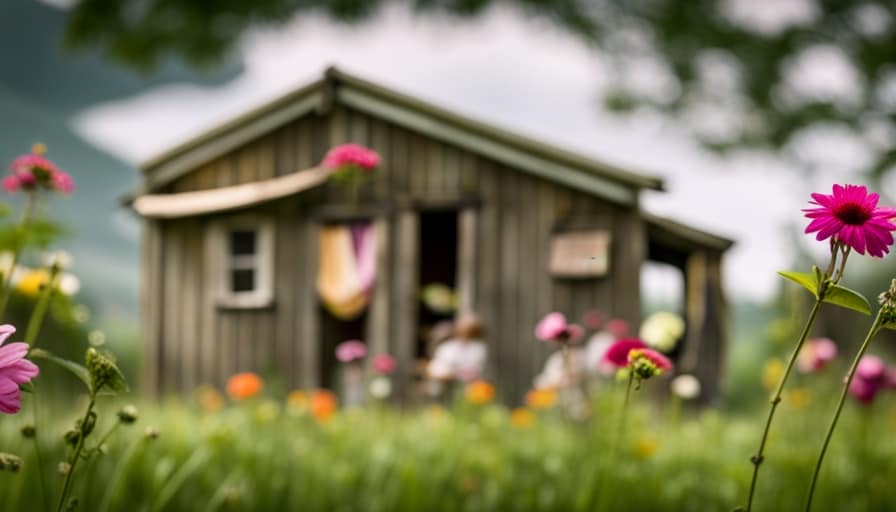
Sustainable energy solutions and outdoor living spaces provide a sense of connection with nature.
As the saying goes, ‘A tiny house with a big heart.’
I’m Theodore, and I love tiny houses. In fact, I’m the author of Tiny House 43, a book about tiny houses that are also tree houses. I think they’re magical places where imaginations can run wild and adventures are just waiting to happen.
While tree houses are often associated with childhood, they can be the perfect adult retreat. They offer a cozy space to relax and unwind, surrounded by nature. And since they’re typically built on stilts or raised platforms, they offer stunning views that traditional homes simply can’t match.
If you’re looking for a unique and romantic getaway, a tree house tiny house might just be the perfect option.




